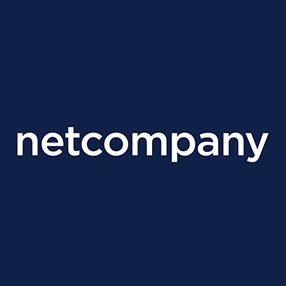
The Shapps Report could initiate change
Today, railways, like so many other sectors of the transportation industry, are facing seismic changes. With environmental regulations coming to the fore because of climate change initiatives, as we look to keep global warming to 1.5˚C, combined with the pandemic, supply chain disruption, the energy and oil crisis and more, this sector needs to modernise and innovate. To this point, the recent Shapps report identified serious issues facing the railways before Covid struck; of course, the pandemic has exacerbated some of these. During Covid, the government provided unprecedented support to keep the railways running. Today, systems need overhauling and fundamental changes implemented for railways to survive, remain competitive, meet future demand, and support the transition to greener transport.
But today’s railway is fragmented – numerous bodies incentivised in different ways has led to a lack of joined-up thinking. No single organisation is accountable for integration, planning and leadership across infrastructure, passenger services and freight operations. The Shapps report outlines how the government plans to make railways the backbone of a cleaner, more environmentally friendly, and modern public transport system across the country. By replacing franchising, accelerating innovation, and integrating the railways, the government intends to deliver an efficient, financially sustainable railway that meets the needs of passengers and organisations who rely on rail daily.
Railways must transform, but they are not alone
Railway sector organisations must deliver agile ways of working that improve productivity, operational efficiency and enable organisations to migrate away from rigid legacy systems. They have to do this while keeping operational costs low.
Many other parts of the travel and transport sector face similar challenges. Many airports rely on old legacy systems and processes. For example, Copenhagen Airport faced many of these challenges before it embarked on a radical digital transformation programme. That programme has now seen it named the most efficient airport in Europe fifteen out of seventeen times by the independent Air Transport Research Society (ATRS).
To maintain this position, it adopted an ambitious strategy. It has taken a drastic approach to digital transformation. Working with Netcompany, Copenhagen airport implemented a ‘smarter airport’ solution – AIRHART. AIRHART has moved it away from the legacy Amadeus system, dramatically improved punctuality, and drastically reduced waiting times through better forecasting and turnaround management. The new AIRHART solution allows for more efficient use of existing resources. It has enabled the airport to increase throughput and raise passenger numbers. All the while making a considerable reduction in IT costs and meeting its sustainability goals.
The barriers remain for many organisations
However, legacy systems are one of the biggest barriers to change for many organisations, and this isn’t unique to the railway industry. Even though there has been a lot of talk about the pandemic accelerating digital transformation initiatives, the reality is that many companies are still running on mainframes. The challenge is how to extract themselves in a cost-effective and time-efficient way. Also, many organisations have reached the limit of what they can do with digitisation because undertaking more radical digitisation requires them to get out of legacy. Many are concerned about getting it wrong because this can cost the organisation a lot of time, money as mission-critical systems could grind to a halt.
Equally, no organisation should try to simply ‘shift and lift’ to a new system. At the same time, they don’t want to tinker with parts of the system without a thorough understanding, as this can invite a lot of business risk. So, legacy must be approached extremely carefully. The key is finding out what data within these systems is important and valuable to the business and then making a plan to get out of legacy in a controlled way.
Moving away from the mainframe is possible
The obvious answer for migrating away from cumbersome legacy systems is to look for modern, off the shelf solutions. To do this, you need to extract the valuable data and rearchitect this on another more composable platform. A composable software architecture empowers organisations to move from an all-in-one system to highly-customisable and flexible, ‘best of breed’ applications ready-made for the future.
Our business model is based on an exceptionally effective approach that assembles and reassembles flexible, independent solutions for reuse to deliver different critical business functions across the enterprise. Using our Composable Enterprise Framework, we enable companies to offload their legacy onto new modern platforms with optimised processes, a data-driven culture and a customer-centric business model. Our tried and tested approach, utilising modules and accelerators means we can quickly build on existing systems, rapidly delivering projects at highly competitive prices.
Ultimately, whatever new architecture rail companies chose to build their new systems in, they should avoid high operational costs such as licenses, infrastructure and hosting, and any vendor lock-in. They should choose and use software and components carefully so that they don’t become constrained in the future. Our unique delivery model and Composable Enterprise Framework is changing and accelerating how rail companies, and their customers, are using technology. It is helping to streamline passenger flow and passenger management, making transportation better and safer for society at large.


























